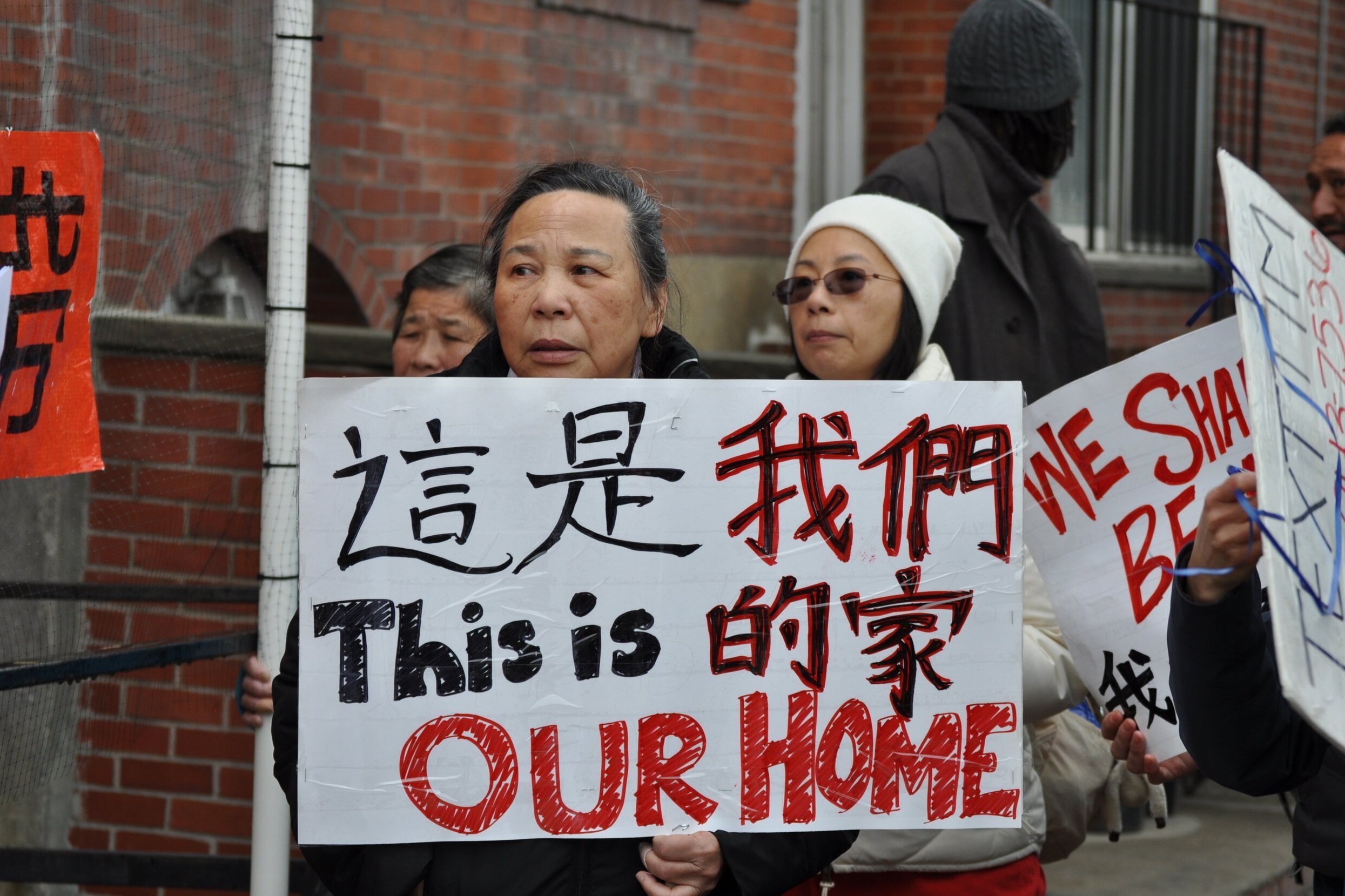Chinatown Microgrid Project
Photo courtesy of the Chinatown Community Land Trust
Chinatown Microgrid Overview
The Resilient Urban Neighborhoods and Green Justice Coalition (RUN-GJC) has been advising the development of two clean energy community-owned microgrids in Chelsea, Massachusetts and Boston’s Chinatown neighborhood. The Chinatown microgrid is a project developed as a collaboration between Climable, The Chinese Progressive Association (CPA), and Chinatown Community Land Trust (CCLT) for the creation of community microgrids. Our current energy grids are aging and poorly equipped to adapt to our rapidly changing climate. The most vulnerable communities (low-income, disabled, Black communities, Indigenous and immigrant communities, children, and the elderly) face the worst consequences of these problems. Chinatown also suffers disproportionate environmental impacts such as toxic pollution, proximity to polluting infrastructure, lack of tree canopy or green space, lack of permeable surfaces, and threats of flooding, heat stroke, and other public health issues as a result. The microgrid initiative aims to harness community power and provide local residents with control over their own energy generation, new jobs, revenues and savings, and climate resilience. RUN-GJC developed these microgrid models to advance our vision of energy systems that are clean, equitable, and democratic.
Unlike traditional microgrids, the buildings in the RUN-GJC design do not have to be wired together. Instead, microgrid components are connected and controlled virtually, which allows for any building to be included even if they are a few blocks apart. Chinatown Power, a Public Benefit Corporation, was created to manage the assets and benefits of the microgrid.
History
Three sites in Chinatown were evaluated in a 2018-2020 feasibility assessment: Castle Square Apts., 65 Harrison, and Josiah Quincy Elementary School. Since then, Castle Sq. Apartments have decided to wait until phase II, and six other multi-family affordable housing buildings have been added. The improvements involve: (1) energy efficiency retrofits and replacements; (2) battery storage and solar panels; (3) bio-fueled generators.
Advantages of Microgrids
Provides reliable, affordable, and accessible electricity to all residents.
Ensures community safe and wellbeing by supplying emergency energy when there are grid outages caused by power failures or climate change-induced extreme weather events.
In a power outage, the microgrid’s ‘island mode’ capability allows it to disconnect from the grid and use its local energy generation to provide a reliable source of energy. Reliable energy is a critical feature when it comes to community resilience!
Reduces local emissions by committing to clean energy solar panels and batteries. While many sources of power generation can be used, our microgrid can aid in the transition to clean energy as it maximizes use of renewable sources
Avoids fossil fuels by employing batteries, solar, biofuel-powered backup generators, and electric vehicles whenever possible. It also prioritizes energy efficiency.
What are we doing?
Project champions and advisors on decisions
Technical translators
Financial advising, attending exploratory meetings with potential funders.
Review grant proposals. Ensuring criteria for EJ communities is met.
Attend meetings with energy service companies involved in the project
One of the major efficiency improvements being explored is replacing built-in window unit AC units with heat pumps. This would reduce electric consumption during the summer months and allow tenants greater temperature comfort and control within their residences. It would also shift heating costs currently covered by property owners through utility subsidies from the City to tenants and increase electric consumption during winter months. We are ensuring that tenant utility subsidies are calculated correctly to guarantee this work does not result in an added cost to tenants. This project is designed to be able to expand on a building by building basis.
This project aims to ensure Chinatown residents will have a reliable source of electricity and communications during a grid outage while providing energy savings during normal grid operations. The microgrid will promote cutting carbon emissions via the installation of renewable generation, heating decarbonization, energy efficiency improvements, and peak demand reduction via battery storage.
As we tackle the questions around utility subsidies in Chinatown, we will continue development of the solar and battery storage elements and refine our estimates and savings model to ensure clean and efficient energy is available for all residents.


